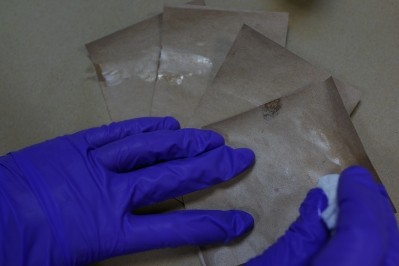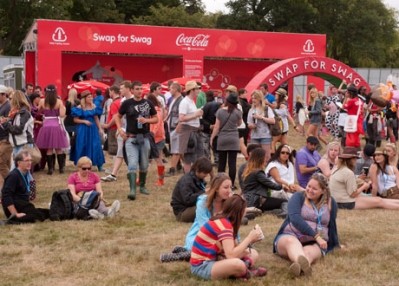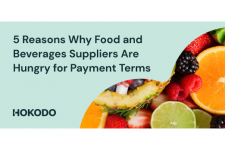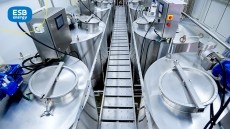Packaging will play key role in food sustainability
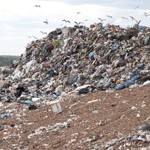
From light weighting to life cycle analysis and resealing to recycling, sustainable packaging is a complex and contentious issue.
While a recent report from accountancy firm PwC concluded “sustainable packaging as a term is no longer relevant”, manufacturers nonetheless face pressure to reduce food and drink packaging and wastage.
The UK faces mandatory 2017 recycling and recovery targets under the European Commission Directive on Packaging and Packaging Waste, while many manufacturers and retailers have voluntarily committed to packaging waste reduction targets under the Courtauld Commitment 3.
Anthem Worldwide, a packaging designer for globally-recognised brands, claims green issues are as important as ever. “A recent survey has found that recycling is key to consumers, with many refusing to purchase products with packaging that couldn’t be recycled,” says Mark Ringer, executive creative director for the UK and Europe at Anthem. “Furthermore, consumers voted ‘bio-based materials’ as the highest among environmental trends shaping the future of beverage packaging. Being environmentally-sound does not need to impact on brand image and desirability from the shelf out.”
A long way to go (Return to top)
UK-based packaging supplier TrakRap identifies environmentally-friendly credentials as an important brand asset. “The packaging industry has definitely become more focused on sustainability, but it still has a long way to go,” says Martin Leeming, chief executive of TrakRap. “Even now, there is a huge emphasis on simply shifting units and filling capacity.
“Corporate environmental goals have definitely been a driver, with many companies such as Marks & Spencer keen to present a transparent sustainability policy which not only presents them as ecocentric to the consumer, but influences the purchase behaviour of consumers by presenting them with choices which do not cause harm to the environment.
“Price has been the key driver in the past, but having a brand that is synonymous with protecting the environment will be the battleground of the future.”
For RPC, a global manufacturer of plastic packaging for brands such as Heinz and Unilever, “media attention on packaging is undoubtedly driving manufacturers and consumers to seek pack solutions that are perceived to have minimal impact on the environment”, says Katherine Fleet, RPC's sustainability manager.
And for Dow, a US-based supplier of raw materials for packaging, there are many drivers of sustainable packaging, but topping the list is efficiency in food and drink manufacture.
“Sometimes individual consumers are asking suppliers to be more responsible,” says Jeff Wooster, global sustainability leader in Dow’s performance packaging division. Equally, sometimes it may be non-governmental organisations and government asking manufacturers to be more responsible in resource allocation. But, more often than not, sustainability improvements are driven by food processors looking for cost savings by extending shelf-life and minimising food waste.
Lifecycle approach (Return to top)
For many suppliers of packaging solutions and raw materials, including Dow, sustainability in packaging has shifted focus to a lifecycle analysis or an ‘holistic approach’.
Each process involved in the manufacture of packaging is now viewed as part of the whole lifecycle, says Wooster. Food and drink manufacturers need to look at packaging in terms of whether it offers the right barrier and toughness properties, is easy to open and re-sealable, and optimises how the food inside is used. “When anybody looks at new materials, they need to understand the trade-offs but also what the potential might be down the road,” says Wooster. Packaging solutions perceived as more sustainable do not automatically command a premium, he says, unless offering other superior benefits such as easier product filling or enhanced performance.
RPC also highlights the importance of how sustainable packaging is defined. “For many consumers, sustainability is merely about recycling or the incorporation of recycled material but a pack has to be completely fit for purpose, otherwise any so-called sustainable benefits count for nothing,” says Fleet. “For example, if a pack contains recycled material but the food it contains goes off in a couple of days, it is of little use; particularly since on average 10 times more energy goes into the production of food and goods than into their packaging and, in the EU, food accounts for five times more waste than packaging.
“Nor is the ‘no packaging’ option always the best solution for the environment; 27% more fruit is wasted when it is sold loose compared with pre-packed in plastic trays.”
According to Fleet, it is more appropriate to look at the overall impact of the packaged product itself, “covering areas such as its production and transport, as well as at the benefits packaging brings”.
“A multilayer pack might cost more but the benefits are longer shelf-life and reduced food waste,” she says. “A post-consumer reclaimed pack might be more expensive but it reduces the requirement for virgin material and generates an end market for recycled material which can lead to a reduced carbon footprint for the packaging.”
TrakRap concurs: “By taking an holistic view of the packaging process and focusing on the whole system, you can not only achieve a significant cost reduction per pack, but a significant reduction in energy usage,” says Leeming. “Some industry analysts are now predicting that the next 10 years will see sustainability overtake cost as the number one purchasing decision. Efficient solutions that consume fewer resources, use less materials throughout the supply chain and are quantified by life cycle analysis will become the norm.”
TrakRap has developed a new packaging innovation which cuts waste and carbon emissions by eliminating the heat typically used in shrink wrap systems, and substituting it with lighter, 100% recyclable polymer film. Combined with its corrugate tray designs using less cardboard, the system is suitable for ambient, fresh and frozen products.
Packaging innovation (Return to top)
“During an extensive trial with Dale Farm, TrakRap replaced three shrink wrapping machines, used to package yogurts and crème fraiche ready for transport and distribution, with its own machines,” says Leeming. “Use of the TrakRap system reduced Dale Farm’s film usage by 68%, achieving a carbon dioxide reduction of 87t per annum and a lower cost per pack.”
Reducing packaging is a good place to start, he says. “We need to keep the momentum going and keep investing in innovations such as new materials and methods which achieve the same goals, but with less weight,” he says. “A good example is Nestlé’s Buxton mineral water where a two-year programme led to the light weighting of the bottle and cap. It may not sound much, but this one product change alone has saved 2,000t of packaging and reduced the number of lorries carrying it by 20%.”
Dow, meanwhile, supplies the materials for food pouches made entirely from polyethylene, offering a more efficient and sustainable alternative to multi-material pouches while maintaining performance, appearance and machineability.
The pouches are not only “saving money and resources, but also delivering packaging that consumers find easier to use”, says Wooster.
RPC extols the flexibility of plastic: “We are seeing a greater focus on the overall use of resources in the selection of new packaging,” says Fleet. “Plastics have had notable success replacing glass and tin in certain food markets because they can offer similar levels of product protection and shelf-life while their lighter weight and bulk reduce supply chain effects, for example in fuel for transport.”
Consumers (Return to top)
Alongside the investment going into recyclable packaging is a big push to ensure consumers actually do recycle. RPC has produced a YouTube video to communicate the recyclability and convenience of polypropylene pots, tubs and trays (PTTs) to consumers.
“We think that many consumers are aware that polyethylene milk bottles and PET [polyethylene terephthalate] drinks bottles can be recycled, but there is less understanding about the recyclability of PTTs,” says Fleet. “Consumers like these types of packs for their convenience and ease of use, so we need to demonstrate that there is no stigma attached to using them, and that when they are finished with, they still have a valuable role and are not merely destined for landfill. Part of the problem is that there is no co-ordinated approach among local authorities when it comes to the collection of PTTs.”
Coca-Cola Enterprises (CCE) recently launched an on-line Recycling Challenge aimed at boosting household recycling. While all of its own cans and bottles are recyclable, CCE collaborated on a study of household recycling with the University of Exeter to find out why only half of all plastic bottles currently sold in GB and France are collected for recycling. The research concluded that a combination of old habits, lack of consumer knowledge and scepticism around recycling and aesthetic and space issues with recycling bins is hampering household recycling.


